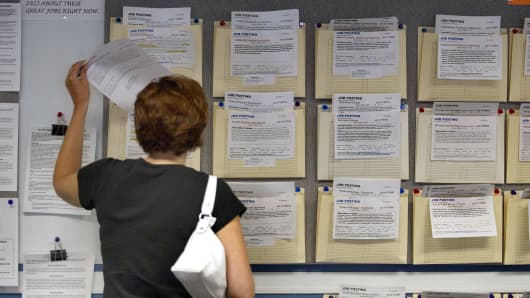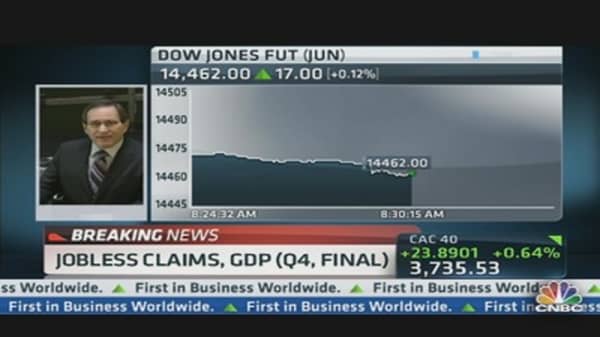Initial claims for state unemployment benefits increased 16,000 to a seasonally adjusted 357,000, the Labor Department said. Still, they remained in the middle of their range for this year.
The prior week's claims figure was revised to show 5,000 more applications than previously reported. Economists polled by Reuters had expected first-time applications last week to rise to 340,000.
Last week's report contained annual benchmark revisions to the series and the model used by the government to iron out seasonal fluctuations.
Last week's increase pushed claims above the 350,000 level for the first time since mid-February.
(Click here for the full report.)
The four-week moving average for new claims, a better measure of labor market trends, rose 2,250 to 343,000, but remained below the 350,000 level.
That could offer hope job growth this month retained some of the momentum from February. Nonfarm payrolls increased 236,000 last month, with the unemployment rate falling to a four-year low of 7.7 percent.
(Read More: US Job Creation Surges as Rate Falls to 7.7%)
Claims over the next several weeks will be watched closely for signs of layoffs related to $85 billion in government budget cuts known as the "sequester." So far, there is little sign the across-the-board spending cuts are affecting the job market.
A Labor Department analyst said no states had been estimated and there were no special factors influencing the report.
Claims, however, could become volatile in the coming weeks because of the early timing of Easter and spring breaks, which could throw off the so-called seasonal factor.
The labor market is being closely watched by the Federal Reserve, which last week said it would maintain its monthly $85 billion purchases of mortgage and Treasury bonds to foster faster job growth.
``The underlying growth trend is showing some encouraging signs, but the key risk is how much fiscal tightening we'll see this year,'' said Laura Rosner, economist at BNP Paribas in New York.
The number of people still receiving benefits under regular state programs after an initial week of aid dropped 27,000 to 3.05 million in the week ended March 16. That was the lowest since June 2008.
The so-called continuing claims covered the period for the household survey from which the unemployment rate is derived.




